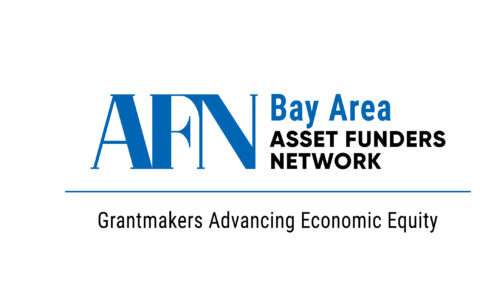Bay Area 2018 Conference
Bay Area AFN Asset Building Conference: Learning + Action Series – Building an Inclusive & Equitable Economy – Moving Ideas Into Action
On Nov. 1st, we shared new research, challenges and opportunities that move forward innovative strategies and ideas to build a more inclusive and equitable Bay Area.
The goal of this conference was to learn from each other, build relationships and identify opportunities to take collective action so that together, we can build a more inclusive and equitable Bay Area where all people have an opportunity to thrive.
Session Topics include (Please see below for details.):
Opening Address
Opening Plenary
The Impact of the Changing Nature of Work on Family Economic Stability
Addressing Suburban Poverty in the Bay Area
Innovating An Inclusive Economy*
Legislative Update
Key Issues & Innovations Around Asset Preservation & Consumer Debt
Closing the Women’s Wealth Gap
*This session was the final session of the series Building an Inclusive Economy: Moving Ideas Into Action. This session focused on innovative efforts to build a more inclusive Bay Area. The series was co-sponsored by East Bay Community Foundation (EBFC), Northern California Grantmakers (NCG) and AFN.
We encouraged robust conversations around the challenges, opportunities and outstanding questions which need to be addressed in order to build a more equitable and inclusive Bay Area.
Agenda
8:30am- 9:00am: Registration (Breakfast)
9:00am- 9:10am: Opening Address
9:15am- 10:15am: Opening Plenary
10:30am- 11:45am: Panel Discussions
12:00pm- 1:00pm: Policy Update (Lunch)
1:15pm- 2:30pm: Afternoon Panel Discussions
2:30pm- 3:30pm: Networking Reception
2:30pm- 4:00pm: Funder-Only Session
Session Details:
Opening Address with Bob Friedman, Prosperity Now
Economies are best built from the bottom-up, by enabling common people to bring their ideas, talents and work to the marketplace as entrepreneurs, home owners, students and skilled workers, savers, investors …creators of wealth. Everybody needs a nest egg — a few thousand dollars — to buffer them from the everyday accidents and illnesses that otherwise reverberate into crises, to give a reason to imagine a future better than the future and plan and prepare for that future, and last but not least, to invest in themselves and their kids. We spend $700+ billion a year investing in family wealth building, but right now we do it in a way that only exacerbates wealth inequality — rewarding the rich, missing the middle, penalizing. A Few Thousand Dollars: Sparking Prosperity for Everyone shows how we can remake this annual investment in inequality into an investment in the productive capacity of all people, and generate millions more businesses, jobs, homes, educations without spending a dollar more.
Opening Plenary
During this plenary session, we presented our vision of an inclusive and equitable economy that creates equitable opportunities for good jobs, entrepreneurship, and career pathways, so that those who are furthest from economic opportunity can build assets and wealth for their families and communities. In order to achieve an inclusive and equitable economy, we need to support a range of strategies, from policy and systems change, developing community leadership, shifting capital towards community wealth building, and supporting business innovations that achieve social purpose and impact on both an individual and community level.
We discussed the challenges, opportunities and outstanding questions which need to be addressed in order to build a more equitable and inclusive Bay Area.
Panelists: James Head, East Bay Community Foundation; Eric Weaver, Opportunity Fund; Orson Aguilar, The Greenlining Institute, Regina Celestin Williams, Richmond Community-owned Development Enterprise)
The Impact of the Changing Nature of Work on Family Economic Stability
Much of the recent economic growth in California, particularly in the Silicon Valley, has been in low-wage, part-time and temporary jobs, widening the gap between rich and poor. The prosperity of the local, technology-driven economy masks a fissured economy, where an ecosystem of contractors employ tens of thousands of workers on behalf of tech companies at low wages and without benefits or job security.
The rise of contingent employment reflects a new norm around work in the U.S.; it is currently outpacing direct employment by three times. Many statewide labor protections do not apply to these workers; thus, they are vulnerable to unsafe and abusive working conditions.
On September 29, 2016, Gov. Jerry Brown signed Senate Bill 1234, creating the California Secure Choice Retirement Savings Program, now called CalSavers. Any employer with at least five employees that does not already offer a retirement savings plan will be required to either begin offering one via the private market or provide their employees with access to CalSavers. CalSavers, run by the State Treasurer’s Office, is a simple, portable, low-fee way for workers to save and grow their own money.
Panelists: Annette Bernhardt, PhD, UC Berkeley Labor Center; Maria Noel Fernandez, Working Partnerships USA; Nalleli Sandoval, United Ways of California; Padmini Parthasarathy (moderator), The California Wellness Foundation
Addressing Suburban Poverty in the Bay Area
As inner-city neighborhoods gentrify and homes become more expensive, low-income families are pushed into less dense suburbs and forced to commute longer distances. Suburban poverty has grown dramatically, however, the antipoverty infrastructure has not kept up to meet the needs of the growing displaced population.
We discussed Addressing Suburban Poverty in the Bay Area. Our panelists reviewed recommendations for public, private, and nonprofit leaders working on poverty alleviation and community development strategies to connect residents with economic opportunity.
Panelists: Marco Chavarin), Citi Community Development (moderator); Rich Gross, Enterprise Community Partners, Inc.; Kristi Laughlin, East Bay Alliance for a Sustainable Economy (EBASE); Elizabeth Kneebone, UC Berkeley
Innovating An Inclusive Economy*
We heard from community innovators who are developing new business models and practices that embody an inclusive economy and build community wealth. This session highlighted businesses operating with a triple or quadruple bottom line, democratic governance or ownership structures, or owned by people of color, and explored how businesses can create equity and economic security for Bay Area residents, especially those furthest from opportunity.
Panelists: Sabrina Wu, East Bay Community Foundation (moderator); Liam Chinn, Restore Oakland; Maria Rogers Pascual, Prospera; Jessica Travenia, Clean360 of Roots Community Health Center
Legislative Update
During lunch Sabrina Hamm from California Asset Building Coalition provided an update on key asset building legislation in California
Speaker: Sabrina Hamm, California Asset Building Coalition
Key Issues & Innovations Around Asset Preservation & Consumer Debt
Research has shown that consumer debt has reached historic highs despite a growing economy. While unemployment is at the lowest rate since the Great Recession, wages have not kept pace with the cost of living. This has left many households unable to cover basic expenses – let alone and emergency. In low income households and households of color, this has led to an increase in outstanding debts such as past due medical bills, student loans, and more.
This session focused on consumer debt, the negative impacts of specific types of debt (including student debt, medical debt, municipal fines and fees) and the conditions under which debt can be a source of financial insecurity, as opposed to an opportunity for future economic mobility. The discussion highlighted local innovative solutions being implemented by non-profits, and state and local governments to address the impact of household debt in low income communities and communities of color.
Panelists: Alexandra Bastien (moderator), Silicon Valley Community Foundation, Kathryn Mc Kay, Aspen Institute, Suzanne Martine (Consumers Union), Megumi Tutsui, HERA, Anne Stuhldreher, Office of Financial Justice, City of San Francisco
Closing the Women’s Wealth Gap
We’ve all heard of the gender pay gap, but the women’s wealth gap is less well-understood. For example women earn 79 cents on the dollar but own only 32 cents for every dollar owned by single men. We also know that two-thirds of mothers are either sole breadwinners, primary breadwinners or co-breadwinners. Therefore the economic security of families rests on the shoulders of women more than ever before. This is a particularly big concern for low-income, single women and women of color.
Since the issues impacting women’s ability to build and retain wealth are interrelated throughout their life span, it stands to reason so should the solutions.
We heard highlights from authors of newly commissioned research produced by AFN in collaboration with Closing the Women’s Wealth Gap (CWWG) addressing the numerous factors which affect women’s ability to accumulate and retain vital assets like emergency savings, college savings for their children, home ownership, and retirement. Our discussion included examples of both policy and practice strategies funders, policy advocates and practitioners can explore to stabilize the financial security of single women.
Panelists: Surina Khan, Women’s Foundation of California (moderator); Amy Castro, University of Pennsylvania; Anne Price, Insight Institute for Community Economic Development; Amber Christ, Justice in Aging.
The Asset Funders Network engages philanthropy to advance economic opportunity and prosperity for low and moderate income people.


